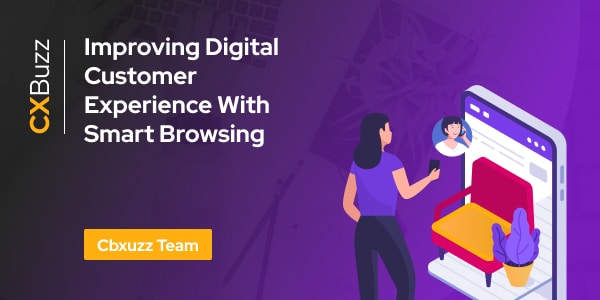In today’s digital-first economy, customer experience isn’t just about how a company communicates — it’s about every click, scroll, and interaction a user has online. Whether browsing a brand’s website, reading a blog, or making a purchase, digital interruptions can make or break a user’s journey. That’s where online efficiency tools like an Adblocker for Chrome step in, improving both productivity and user satisfaction by removing distractions that dilute engagement.
As brands pour resources into digital marketing, they often forget one critical aspect — customers’ desire for control. In an era where users are bombarded with pop-ups, auto-playing videos, and invasive tracking ads, providing a smooth, clutter-free browsing experience has become essential not only for consumers but also for businesses looking to earn trust in a competitive landscape.
How Ad-Free Browsing Shapes Customer Behavior
The modern internet user values speed, clarity, and privacy. According to Statista’s Digital Advertising Report 2024, the average person is exposed to over 6,000 digital ads per day. These ads may slow page load times, increase bounce rates, and reduce user satisfaction. For professionals and consumers alike, such interruptions can cause fatigue — leading to shorter engagement spans and a negative perception of the brands that serve them.
An Adblocker for Chrome helps counter these issues by filtering intrusive elements, allowing users to focus on content that matters most. For digital professionals, especially those in marketing, UX design, or e-commerce, this tool becomes a subtle yet powerful ally in crafting seamless digital experiences.
Balancing Marketing and Customer-Centric Design
At first glance, ad blockers may seem like the enemy of marketing. However, in reality, they serve as a wake-up call for brands to rethink how they engage customers online. The rise of ad-blocking tools reflects a growing consumer demand for authenticity, speed, and transparency.
Smart marketers now recognize that user trust is the new currency of the internet. Instead of fighting ad-block technologies, companies are shifting toward more ethical, permission-based advertising — relying on content quality, personalized offers, and value-driven storytelling to capture attention.
When users install tools like Adblocker for Chrome, it doesn’t necessarily mean they reject all advertising — they reject irrelevant or invasive advertising. This shift pushes marketers to create cleaner, lighter digital environments that respect user choice while maintaining engagement.
Enhancing Data Privacy and User Confidence
Beyond improving browsing speed and experience, ad blockers have become an essential component of online privacy. Many digital ads aren’t just visual — they also contain trackers that collect behavioral and demographic data. Data privacy remains one of the most pressing challenges for online businesses, especially as third-party cookies phase out and new regulations emerge.
By filtering out these trackers, ad blockers help users take back control of their personal information, reducing unauthorized data collection. This is particularly relevant in customer experience management, where companies are expected to uphold transparency while personalizing services.
When customers feel safe and respected, they’re more likely to engage with brands willingly — leading to stronger, trust-based relationships rather than transactional ones.
Why Ad-Blocking Tools Matter for Businesses Too
It’s easy to think of ad blockers purely from the user’s perspective, but businesses can also benefit from these tools indirectly. A smoother, cleaner web environment increases overall customer satisfaction and time spent engaging with meaningful content.
For instance:
- E-commerce websites benefit from faster load times and fewer distractions during checkout.
- Content creators see higher engagement when visitors aren’t overwhelmed by unrelated advertisements.
- Corporate teams experience increased productivity when employees aren’t sidetracked by unwanted pop-ups during research or data management.
In short, an improved digital ecosystem creates a win-win situation — users browse efficiently, and brands communicate more authentically.
Integrating Ad-Free Design into CX Strategies
Customer experience (CX) professionals can take cues from the philosophy behind ad-blocking: simplicity, respect, and speed. Reducing friction is one of the pillars of CX excellence. Whether it’s a marketing funnel or a website interface, every unnecessary element between the user and their goal should be reconsidered.
Ad-blocking tools like Adblocker for Chrome represent a broader trend — the humanization of technology. Customers want interfaces that respect their time and privacy while delivering value. When businesses prioritize this kind of experience, it translates into greater brand loyalty, higher conversions, and positive word-of-mouth — the trifecta of digital success.
What the Future of Browsing Looks Like
The future of digital customer engagement is built around personalization and minimalism. As AI-driven marketing grows, the emphasis will shift toward precision — fewer but more relevant interactions. Tools that empower users to curate their online environments will continue to shape the evolution of customer experience.
Ad-blocking technologies are likely to become more integrated into browsers and operating systems, working hand-in-hand with privacy settings rather than against advertisers. Businesses that adapt to this evolution early — focusing on respectful, data-conscious marketing — will thrive in the coming digital era.
Conclusion
In the ever-evolving landscape of customer experience, trust and user autonomy have become the cornerstones of success. Whether you’re a business optimizing your digital presence or an individual trying to browse more efficiently, leveraging an Adblocker for Chrome is a step toward a more ethical and enjoyable internet.
Ad-free environments don’t just make browsing more pleasant — they redefine how brands communicate, ensuring that each online interaction adds genuine value. For CX professionals, the lesson is clear: when users feel respected, their engagement deepens naturally — and that’s the ultimate win for both sides.






